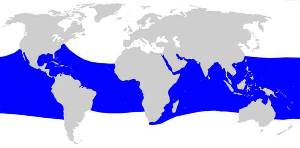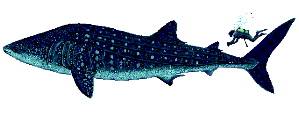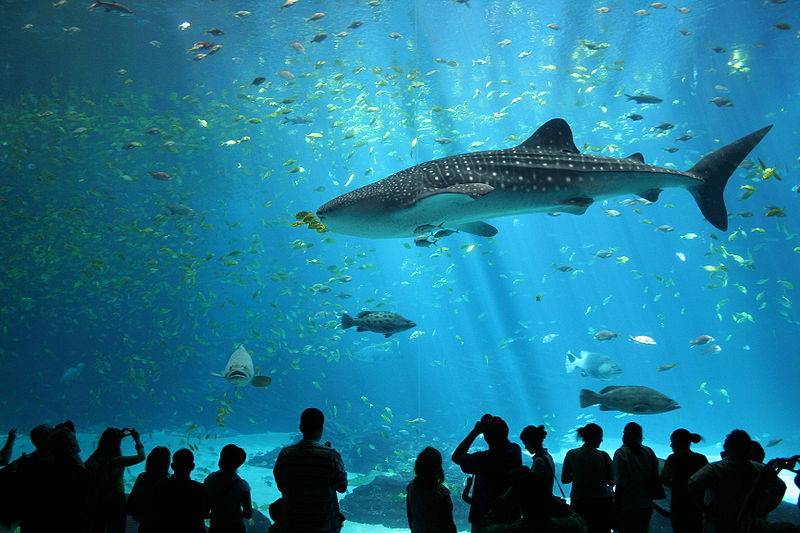World's Biggest Fish
Whale Shark - Rhincodon typus
Online Biology Dictionary
|
|

|
|
Range of whale shark, Rhincodon typus |

|
| Whale shark and human shown to scale |
The world's biggest fish is the whale shark, Rhincodon typus (see photo below). The largest individual known was 12.65 meters (41.50 feet) long and weighed 79,000 pounds. Unconfirmed reports exist of even larger individuals. This is not as big as some whales. But whales, of course, aren't fish. They're mammals. Only prehistorically did larger fish exist, for example, the tremendous predator Carcharocles megalodon. The largest bony fish (teleost) is the Ocean Sunfish (Mola mola), which reaches a maximum weight of 5,000 pounds and a length of 10 feet (see picture at bottom of this page). Sharks, which have cartilaginous skeletons, are not bony fish.
Whale sharks have huge mouths, which they use to filter-feed on plankton, in the same way that real whales do (the only other filter-feeding sharks are the megamouth shark, Megachasma pelagios, and the basking shark, Cetorhinus maximus, which is the world's second largest fish). Its diet of plankton, together with its great size, gave rise to the whale shark's name. Whale sharks, however, do not eat plankton alone. They also consume small fish. The mouth of a large whale shark can open as wide as 1.5 meters (4.9 ft). The teeth are tiny, but the huge mouth typically contains 300 or more concentric tooth rows. There are five gills.
Whale sharks live primarily in the open ocean in warm and tropical waters, but come inshore at times, sometimes entering lagoons and bays, or even the mouths of rivers. They are slow swimmers averaging about five kilometers per hour (3.1 mph). Their life span is about the same as that of a human being. The picture below shows a whale shark at the Georgia Aquarium in Atlanta, Georgia (USA).
 Whale shark at the Georgia Aquarium (Atlanta, Georgia, USA)
Whale shark at the Georgia Aquarium (Atlanta, Georgia, USA)